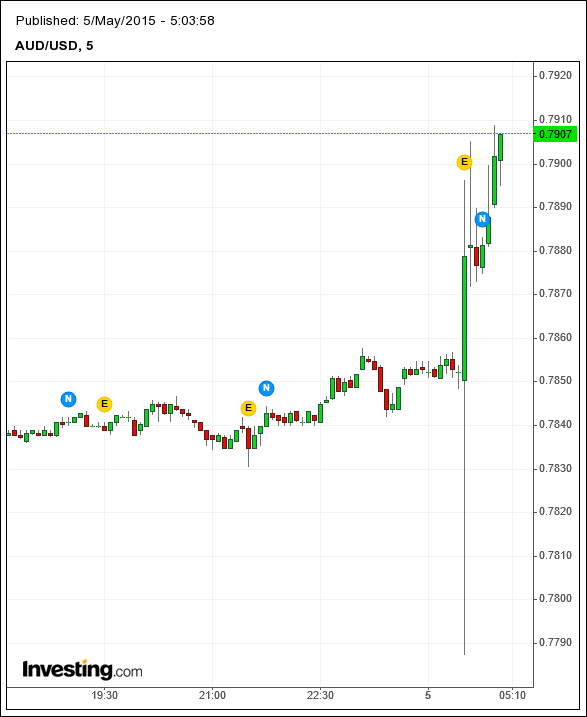In order to maintain price stability, the Government has set the Bank’s Monetary Policy Committee (MPC) a target for the annual inflation rate of the Consumer Prices Index of 2%. Subject to that, the MPC is also required to support the Government’s economic policy, including its objectives for growth and employment. The Inflation Report is produced quarterly by Bank staff under the guidance of the members of the Monetary Policy Committee. It serves two purposes. First, its preparation provides a comprehensive and forward-looking framework for discussion among MPC members as an aid to decision-making. Second, its publication allows the MPC to share our thinking and explain the reasons for their decisions to those whom they affect.
GDP growth was robust in 2014, moderating in the second half of the year. Despite the weakness in 2015 Q1, the outlook for growth remains solid. Household real incomes have been boosted by the fall in food, energy and imported goods prices. The absorption of remaining slack and a pickup in productivity growth are expected to support wage growth in the period ahead. Along with the low cost of finance, that will help maintain domestic demand growth. Activity in the United States and a number of emerging markets has slowed but momentum in the euro area appears to have strengthened over the quarter as a whole.
CPI inflation was 0.0% in March 2015 as falls in food, energy and other import prices continued to weigh on the annual rate. Inflation is likely to rise notably around the turn of the year as those factors begin to drop out. Inflation is then projected to rise further as wage and unit labour cost growth picks up and the effect of sterling’s appreciation dissipates. The MPC judges that it is currently appropriate to set policy so that it is likely inflation will return to the 2% target within two years. Conditional on Bank Rate following the path currently implied by market yields — such that it rises gradually over the forecast period — that is judged likely to be achieved.
CPI inflation was 0.0% in March, triggering a second successive open letter from the Governor to the Chancellor of the Exchequer. Around three quarters of the weakness in inflation relative to target, or 1.5 percentage points, was due to unusually low contributions from food, energy and other goods prices, which are judged largely to reflect non-domestic factors. The biggest single driver has been the large fall in energy prices. Falls in global agricultural prices and the appreciation of sterling have also led to lower retail prices for food and other goods. Absent further developments, these factors will continue to drag on the annual inflation rate before starting to drop out around the end of 2015.
The remaining one quarter of the weakness in inflation relative to target, or 0.5 percentage points, is judged to reflect domestic factors. Wage growth remained subdued in Q1, despite a further fall in the unemployment rate. Part of that weakness is likely to reflect the effects of slack in the labour market, although the concentration of recent employment growth in lower-skilled jobs, which tend to be less well paid, is also likely to account for part of it.
Chart 2 shows the Committee’s best collective judgement for the outlook for CPI inflation. In the very near term, inflation is projected to remain close to zero, as the past falls in food, energy and other goods prices continue to drag on the annual rate. Towards the end of 2015, inflation rises notably, as those effects begin to drop out. As the drag from domestic slack continues to fade, inflation is projected to return to target within two years and to move slightly above the target in the third year of the forecast period.
The path for inflation depends crucially on the outlook for domestic cost pressures. A tightening of the labour market and an increase in productivity should underpin wage growth in the period ahead. There is a risk that the temporary period of low inflation may persist for longer — for example, if it affects wage settlements. Alternatively, wages could pick up faster as labour market competition intensifies, which could pose an upside risk to inflation. Inflation will also remain sensitive to further movements in energy and other commodity prices, and the exchange rate.
Another influence on wage and price-setting decisions is inflation expectations. Nearly all measures of inflation expectations have fallen over the past year, with household measures now below pre-crisis average levels. Surveys suggest that employees and firms expect little recovery in pay growth this year. Other measures of inflation expectations are, however, close to historical averages. The MPC judges that inflation expectations remain broadly consistent with the 2% inflation target.
The MPC also noted, however, that, as set out in the February 2014 Report, the interest rate required to keep the economy operating at normal levels of capacity and inflation at the target was likely to continue to rise as the effects of the financial crisis faded further. Despite this, beyond the three-year forecast horizon the yield curve had flattened further over the past year. There was uncertainty about the reasons for this. Given that uncertainty, there was a risk that longer-term yields would move back up over time, for example, in response to a tightening of US monetary policy.




